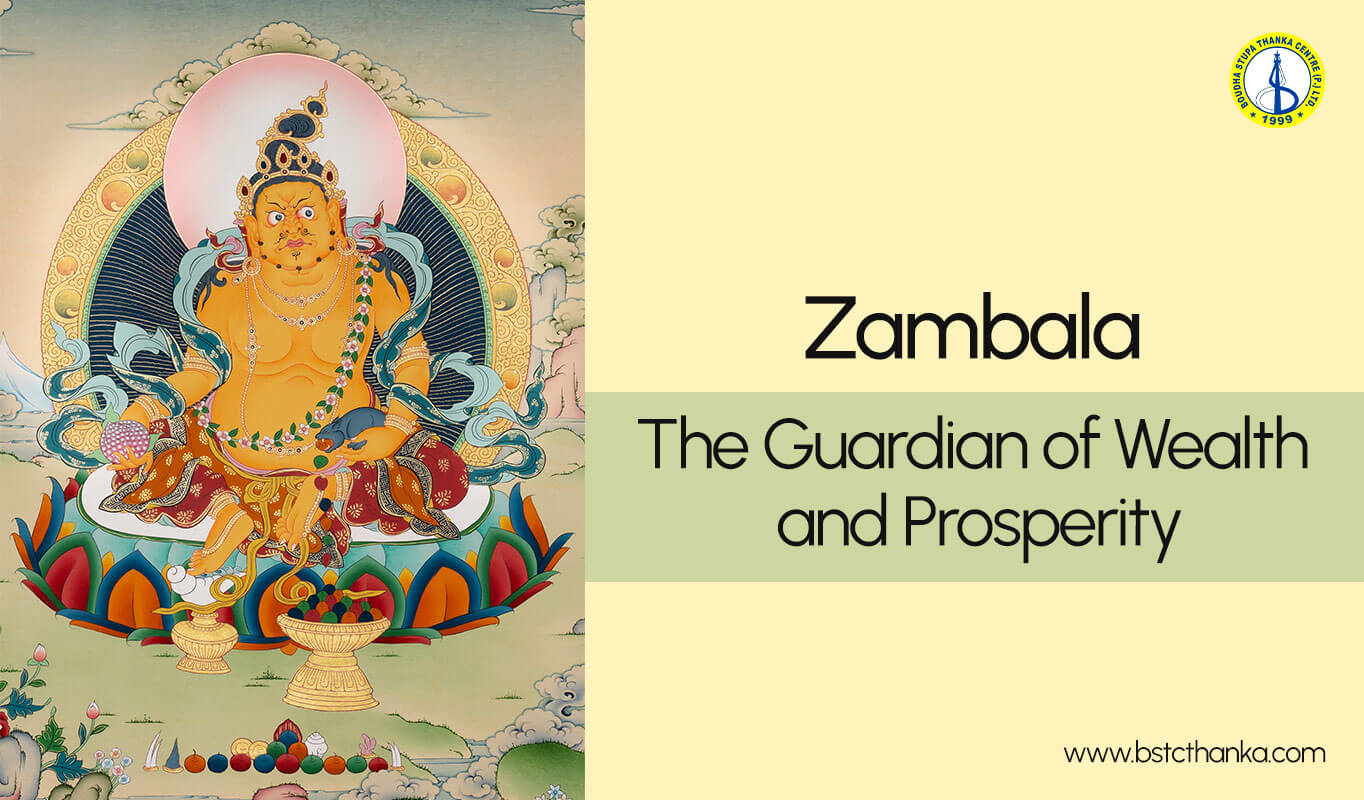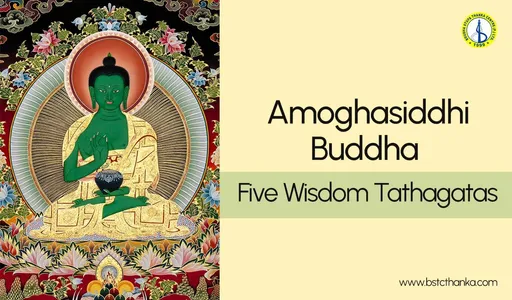
Zambala
Zambala - The Deity of Wealth and Good Fortune
In the collection of Buddhist deities, Zambala (also known as Jambhala) occupies a unique position. Revered as the god of wealth and prosperity, Zambala is a popular figure, particularly in Mahayana Buddhism.
Unlike some deities with a single depiction, Zambala manifests in various forms. The most common portrayal is of a plump, benevolent figure, adorned with jewels and holding a mongoose spitting out jewels. Other forms depict him holding a golden pot overflowing with treasures, symbolizing his ability to provide wealth.
While Zambala is associated with material prosperity, his true purpose goes deeper. In Buddhist teachings, true wealth isn't just about physical possessions. It encompasses spiritual abundance, inner peace, and the freedom from greed and attachment. Zambala, therefore, represents the qualities we need to cultivate to achieve a fulfilling life.
Practices and Mantras
Devotees of Zambala incorporate his teachings into their practices. Meditation with a visualized Zambala is a common practice, believed to cultivate generosity and attract prosperity. Chanting mantras dedicated to Zambala is another way to invoke his blessings.
In a world that often equates success with material possessions, Zambala offers a unique perspective. He reminds us to strive for a life enriched by both material and spiritual well-being.
About Origin Iconography of Zambala
Zambala, also known as Jambhala or Dzambhala, traces his origins to ancient Indian mythology, where he was initially worshipped as a deity associated with wealth and abundance. However, it was within Tibetan Buddhism that Zambala assumed greater significance, evolving into a revered figure with distinct attributes and symbolism.
Depictions of Zambala vary across different traditions and lineages within Tibetan Buddhism. However, certain common elements persist, such as his association with wealth, abundance, and protection. Zambala is typically depicted as a wrathful deity adorned with ornaments, wielding a mongoose spewing forth jewels, symbolizing of giving material wealth. He is often depicted seated on a lotus throne, surrounded by symbols of prosperity, such as overflowing treasure vases and grains.
Zambala's Four Principal Forms
Zambala manifests in four principal forms, each associated with specific attributes and blessings:
- Yellow Zambala (Kubera): Yellow Zambala, also known as Jambhala, is the most popular wealth deity in Tibetan Buddhism. Yellow Zambala is often depicted holding a citron fruit (a symbol of wealth) and a mongoose that spits out precious jewels, symbolizing the bestowal of prosperity.
- White Zambala: White Zambala is associated with purity, wisdom, and the accumulation of spiritual wealth. Devotees often turn to White Zambala for blessings related to spiritual growth, clarity of mind, and the removal of obstacles on the path to enlightenment.
- Black Zambala: Also known as the wrathful form of Zambala, Black Zambala is revered for his fierce protection against obstacles, negative energies, and malevolent forces. Devotees seek the blessings of Black Zambala for courage, strength, and overcoming adversities.
- Red Zambala: Red Zambala is associated with the elimination of poverty and financial difficulties. Devotees invoke Red Zambala's blessings for financial stability, success in endeavors, and the fulfillment of material aspirations.
- Green Zambala: Represents success in endeavors and removing obstacles to achieving goals.
An Overview of Rituals and Practices:
Devotion to Zambala often involves various practices and rituals aimed at invoking his blessings and cultivating a mindset of abundance and generosity. These practices may include:
- Mantra Recitation: Chanting Zambala's mantra, such as the famous mantra "Om Zambhala Zalendraye Soha," is believed to invoke his blessings and attract wealth and prosperity.
- Offerings: Offering rituals, including offerings of water, flowers, incense, and symbolic representations of wealth, are commonly performed to honor Zambala and express gratitude for his blessings.
- Visualization: Practitioners may engage in visualization practices, where they visualize Zambala in his radiant form, surrounded by abundance and showering blessings upon them.
- Charity and Generosity: Embracing the spirit of generosity and charity is integral to Zambala's teachings. Practitioners are encouraged to engage in acts of kindness, charity, and generosity as a means of accumulating spiritual merit and fostering abundance in their lives.
Frequently Asked Questions About Zambala
Who is Zambala?
Zambala, also known as Jambhala, is a deity in Tibetan Buddhism revered as the God of Fortune and Wealth. He is depicted as a benevolent figure, often with golden skin, symbolizing abundance and prosperity.
What are the different forms of Zambala?
There are five main forms of Zambala, each with a slightly different focus:
- Yellow Zambala: The most popular form, associated with general wealth, prosperity, and overcoming poverty.
- Green Zambala: Represents success in endeavors and removes obstacles to achieving goals.
- White Zambala: Linked to spiritual wealth, wisdom, and purity.
- Red Zambala: Embodies power, increase, and growth in wealth and possessions.
- Black Zambala: Represents overcoming fear and negativity associated with poverty.
Why do people worship Zambala?
Devotees seek Zambala's blessings for:
- Financial security and overcoming poverty
- Abundance in all aspects of life, not just material wealth
- Success in business ventures and endeavors
- Removal of obstacles to achieving goals
How do people worship Zambala?
There are various practices associated with Zambala:
- Mantras: Chanting specific mantras dedicated to each Zambala form.
- Offerings: Making offerings of food, water, or precious objects to please Zambala.
- Visualizations: Meditating while visualizing Zambala and his blessings.
- Reciting Texts: Reading scriptures or prayers associated with Zambala.
Is Zambala the same as a god?
While revered, Zambala differs from a traditional god. He is an enlightened being who uses his power to help others achieve not just material wealth but also inner qualities leading to a fulfilling life.
Is worshipping Zambala greedy?
The core principle behind Zambala is not just material gain but also cultivating generosity and compassion. The aim is to use wealth for good deeds and benefit others.





.webp)



